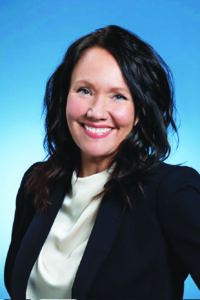Stiffness disease strikes entertainer

The human body is a biological machine of great complexity, an understatement if ever there was one. It is for this reason that so much ignorance remains on the topic. Obviously, we have learned a tremendous amount about how the body works but there are many medical mysteries for which we have no definitive explanation. The variety of diseases for which we have no real understanding fills many textbooks.
One of the topics of continued mystery is that of the autoimmune diseases, of which there are myriad examples. Some of the more common ones are lupus, rheumatoid arthritis, type 1 diabetes. Even MS (multiple sclerosis) is believed to fall into this category. But another of the many rare and unusual autoimmune disorders has come to the forefront, due to the fame of the latest victim of this strange malady.
Celine Dion announced recently that she has been diagnosed with stiff person syndrome. Should any readers be looking for a punch line at this juncture, this disease is no joke. It’s an extremely rare, progressive condition, affecting the nervous system. Those afflicted can experience alternating rigidity of their limbs, with severe spasming of their muscles, what amounts to a powerful muscle cramp.
Stiff Person Syndrome can cause an affected joint to contract quite forcibly, the muscles becoming so rigid they feel like a board. The spasms can be so intense it can cause a bone to break. The condition generally first presents between 40 and 60 years of age, and indeed Ms. Dion was 54 when symptoms began (although it has been reported in people both younger and older).
This is not a commonly seen illness, occurring in 1 or 2 individuals per million. We know that it’s twice as likely to afflict women as men. SPS, as it’s known, is often associated with some other autoimmune condition, like the aforementioned type 1 diabetes or Hashimoto’s thyroiditis. The muscle groups affected by this illness can vary, perhaps in the trunk musculature, an extremity or two, there’s no consistency in its distribution.
Stiffness is the hallmark of the disease, as the name implies. Ms. Dion had been experiencing cramps of terrible intensity, causing tremendous pain. Because of its varying anatomic distribution, any muscles can be affected. This would explain her inability to perform since singing requires the use of the throat and facial musculature. Over time, SPS can limit your ability to move about and walk.
Sad to say, Stiff Person Syndrome is generally progressive, meaning it gets worse with time. Because the leg muscles are the most commonly afflicted, falling is commonplace, obviously increasing the risk of serious injury. In addition, people with SPS do not have normally functioning reflexes and so cannot catch themselves. With time, some will develop a hunched posture, unable to straighten up. Others become too disabled to walk.
We don’t understand many things about this disease, especially its association with the sufferers emotional state, referencing in some fashion the mind-body connection (of which our understanding is rudimentary, at best). The spasms can be triggered by all manner of stimuli, a sudden movement, cold temperatures, an unexpected loud noise.
The diagnosis is often difficult to arrive at, the condition mislabeled, or the sufferer disbelieved. This is probably at least in part the result of its rarity, with few physicians having any firsthand experience. And SPS can mimic many other neuro-inflammatory diseases, like MS, serving only to delay the diagnosis. Adding to the confusion surrounding SPS are the plethora of names used in the medical literature to describe the condition.
With any of these autoimmune diseases, the body’s immune system is over-reacting, attacking not some invading microorganism but some tissue or structure in the body. The target tissue can be joint structures, as in rheumatoid arthritis, or the skin, as in scleroderma. With SPS, it is believed to be some component of the brain and spinal cord under assault.
When some disease is poorly understood, the likelihood of having an effective treatment is lower and this is the case with SPS. Medical care is focused on relieving symptoms, typically with pharmacologic therapies, i.e. with drugs. Options include sedatives, muscle relaxants, and steroids.
The most effective therapeutic approach seems to be with the administration of human antibodies intravenously, termed immunoglobulin therapy (or IVIG, intravenous immune globulin). These are specialized proteins produced by the body to fight off foreign invaders, each one programmed to be effective against a particular microbe or target substance.
This approach does not provide a cure; there is no known solution to SPS. Instead, it is a maintenance therapy, aiding in maintaining some normalcy to the lives of these individuals. Essentially, IVIG can serve to improve and maintain the activities of daily living (the all-important ADL’s), the ability to ambulate and stay upright. Studies have shown about two-thirds of those receiving immunoglobulin therapy had less spasms, and a decrease in stiffness.
Celine Dion’s family has reported progression of her disease, and she can no longer control many muscles. As with many other degenerative neurologic disorders, her prognosis is not good. Regardless, research continues on Stiff Person Syndrome, with the hope that we will gain greater understanding of this and the other autoimmune ailments. Modern medicine may be in the “dark ages” in the resolution of SPS, but we’ve come so very far in the care of many diseases. As objective as one may be on the topic, this author would state emphatically that we still have a long way to go.
Dr. Conway McLean, DABFAS, FAPWHc, has offices in L’Anse and Marquette. He is a physician who specializes in treating lower leg, ankle and foot problems.





